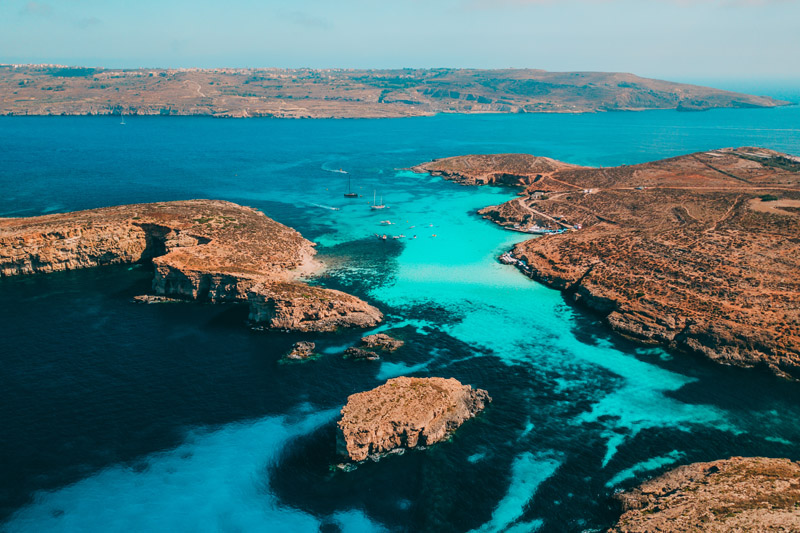History
Malta’s geographical location in the centre of the Mediterranean made it a much fought over prize for centuries.
This can be seen by the majestic fortifications that can be found around the island. It’s history dates back to over 8,000 years when in pre-historic times sophisticated temple builders left their imprint which has survived millennia.
Onto the Middle Ages, Malta was involved in the Byzantine-Arab Wars and was invaded by the Arabs, who introduced new irrigation, some fruits and cotton to the island.
The Arabs also brought over the Siculo-Arabic language from Sicily, to which Malta was closely affiliated at the time. The language would eventually evolve into current-day Maltese.
The Normans seized Malta around 1091, and were welcomed by the native Christians, who saw Roman-Catholicism reintroduced as the state religion.
The Maltese islands became part of the Kingdom of Sicily, which also covered a large part of present-day Italy.
The Order of Knights of St John (also known as the Knights of Malta) ruled the islands from 1530 until 1798, during which period they built present-day capital city Valletta (European City of Culture – 2018). A short stint by the French in 1798 when Napoleon’s army conquered Malta saw slavery being abolished, the creation of an education system including a more scientific based university.
The British saw to Napoleon’s demise in 1800 and ruled the islands until 1964 when Malta gained its independence from the British, to become a Republic in 1974.
Malta joined the European Union in 2004 and introduced the Euro in 2008.
Climate
Malta enjoys over 3000 hours of sunshine throughout the year, its climate typically Mediterranean and strongly influenced by the sea. The Maltese Islands have a pleasantly sunny climate with a daily average of around 12 hours sunshine in summer going down to 5 to 6 hours in mid-winter
Food
Malta offers a wide range of eating options ranging from traditional restaurants to sophisticated eateries presenting modern culinary fares. One can expect a top foodie experience with Maltese cuisine presenting a sizzling array of flavours with an exotic mix of Italian, French, British and Arabic influences brought by the islands’ many historic occupiers. Unsurprisingly, fish features prominently in most menus as are local specialities of bread, cheese and pastizzi – the latter certainly do not figure high in any healthy eating documentary but are tasty and definitely a must try (as a well deserved treat after your race).

